A trip abroad or anywhere for that matter usually does not involve a visit to a cemetery (except, maybe, when the trip is to one's hometown during All Souls Day). Sure, I read about Okunoin—it didn't look too interesting—but because it is said to be one of Koyasan's two most sacred sites (the other one is Garan), I added it to my itinerary. To be visited if time permits.
The end result? I visited Okunoin three times.
November 23, 2016Wednesday
6PM? I dunno, but a few minutes into the walk it sure got really dark.
It never crossed my mind to visit a cemetery at night. By myself, at that. But why in the world did I go? Because the guesthouse staff suggested so. And I never questioned why.
When it started getting dark, I put on my jacket and started my journey to the
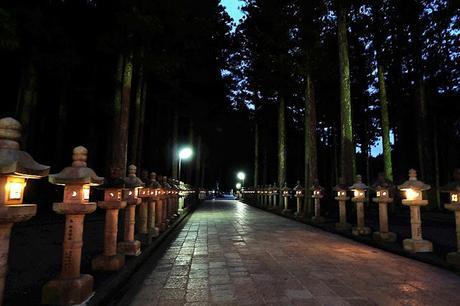 The newer approach
The newer approach The newer approach in the morning
The newer approach in the morningThe pathway was lit by stone lanterns. For the first hundred meters or so. After that, the lanterns were few and far between and I had to use my smartphone's flashlight app to light the way. I encountered three or four people (were they really people? Or ghosts? Haha!) but they were going in the opposite direction, towards the cemetery exit.
Around the halfway point, I heard some movement somewhere ahead of me and to the left, but it was so dark, all I could see were silhouettes of tombstones. I moved slowly towards the noise but stuck to the path's rightmost edge. As I neared, a shadow of a man rose from behind the tombstones and it turned and looked my way, and I walked away as quickly as I could. (What was the man doing there, in the dark?!) It gave me the heebie jeebies.
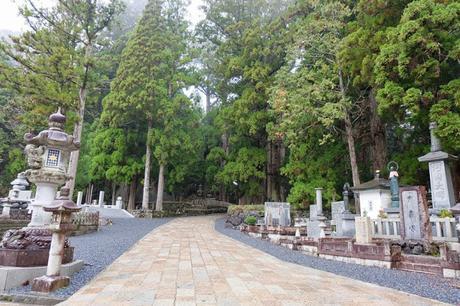 The next morning I took a closer look at the area where the noise had come from.It was at the tombstones around the bend.
The next morning I took a closer look at the area where the noise had come from.It was at the tombstones around the bend.I reached the main path and it was dimly lit with stone lanterns. The rest of the way was uneventful and all I could hear were the soft whisper of leaves of the towering ancient cedar trees, my heartbeat, and my footsteps on the stone path.
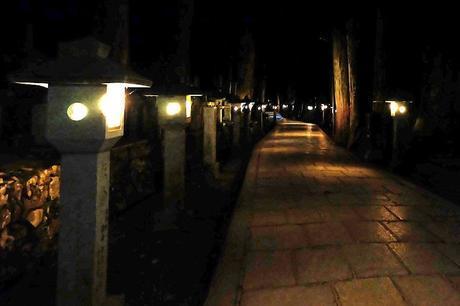
I arrived at Gobyo no hashi (bridge to the mausoleum), which marks the entrance to the mausoleum of Kobo Daishi. Beyond the bridge was Torodo (Lantern Hall, the main hall of worship) and, behind that, Kobo Daishi Gobyo (Mausoleum of Kobo Daishi).
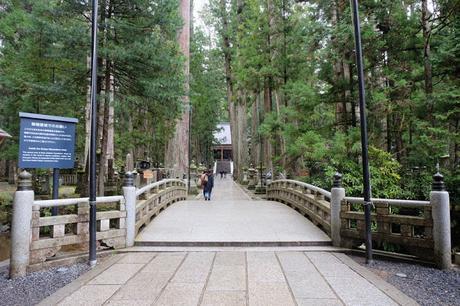 Gobyo no hashi
Gobyo no hashiTorodo was closed (it is only open from 6AM to 530PM) but the thousands of lanterns hanging from the ceiling were all aglow and it was simply magical. I was very glad to have taken the guesthouse staff's suggestion without question. (I have no photo of Torodo and the mausoleum as it is forbidden to take photos beyond the bridge.)
November 24, 2016
Thursday
530AM
Raining
Temperature: 2°C
My alarm rang at 5AM. I hoped no else woke up to it. The guesthouse was quiet and dimly lit; only one other person was up and he was on his way out. I could hear the pitter patter of rain on the roof. It's going to be cold out there.
I dressed up in a layer of long-sleeved shirt and fleece jacket, and I made sure to wear my thermal long johns underneath my denim pants. I grabbed my camera (though, like last night, I won't be able to take photos in the dark and beyond the bridge), my phone, and my umbrella, and stepped out onto the cold, wet dawn.
Why go again, in the not-so-dark? To hear the monks chant at Torodo. Like the chanting of the monks I heard yesterday afternoon in front of Konpon Daito in Garan, this too was enchanting. But, unlike yesterday, there were only a handful of monks chanting in an enclosed and beautifully lit lantern hall, it was solemn and even more captivating. This definitely made getting up very early and walking in the 2-degree-centigrade morning rain worth all the trouble.
I stepped out of Torodo after the monks had left. The sun had already risen. I went back to the guesthouse to have breakfast. After eating my bread, egg, ham, fruit, and yogurt, I decided to go back to Okunoin, this time starting at the traditional approach, to walk the entire 2-kilometer path and to listen to the tidbits that my audio guide had to share about the tombs around Okunoin.
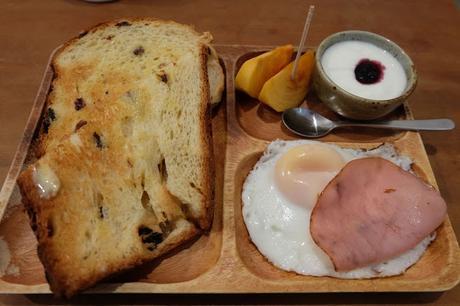 Breakfast
BreakfastI walked off the morning cold from the guesthouse to Icho no Hashi (first bridge), the traditional approach to Okunoin. I switched on my audio guide and my OC mode: my goal was to see all the tombstones and important stuff (like the stone upon which Kobo Daishi sat) listed down in the audio guide's pamphlet.
It was interesting to see the tombstones, especially the really ancient ones all covered in moss, and to hear about the important people these tombstones were for.
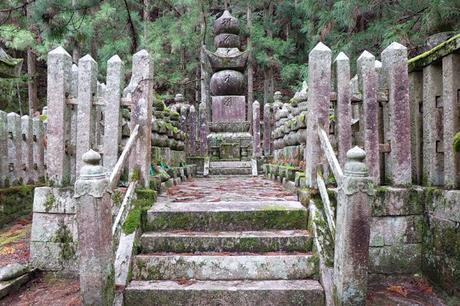
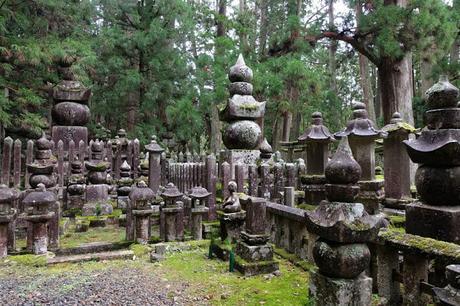
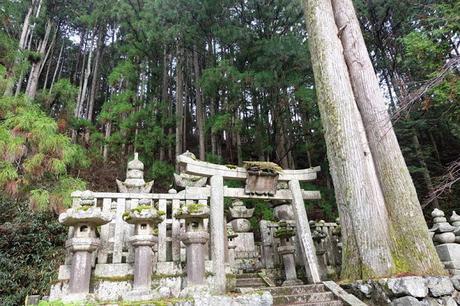
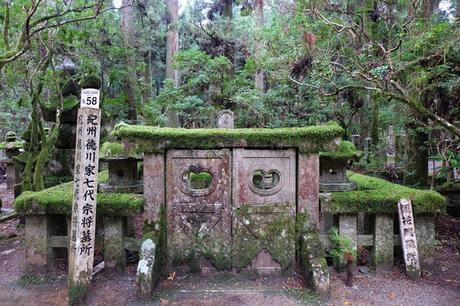
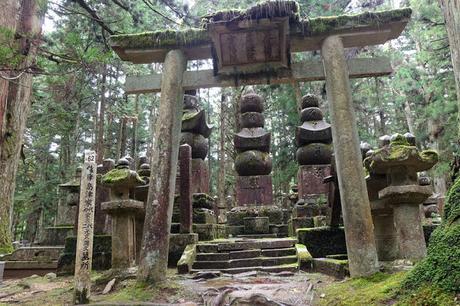
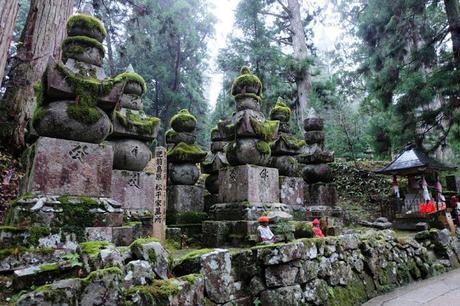
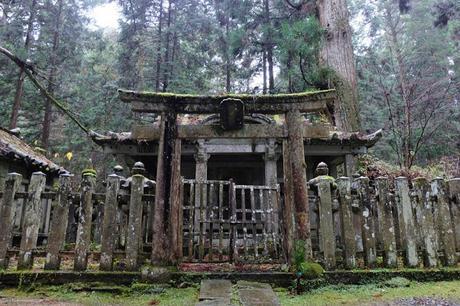
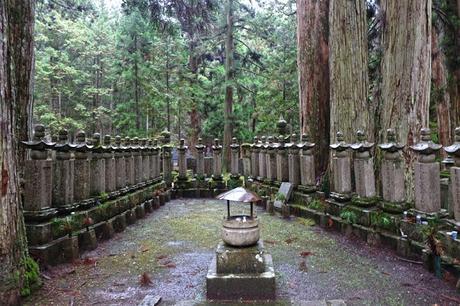
Aside from the tombs, other interesting things around the cemetery were the towering ancient trees, the sugatami no ido (Reflection Well), Zeni Jocchi Memorial, the Jizo statues adorned in red bibs and hats, and the Miroku-ishi (Miroku Stone).
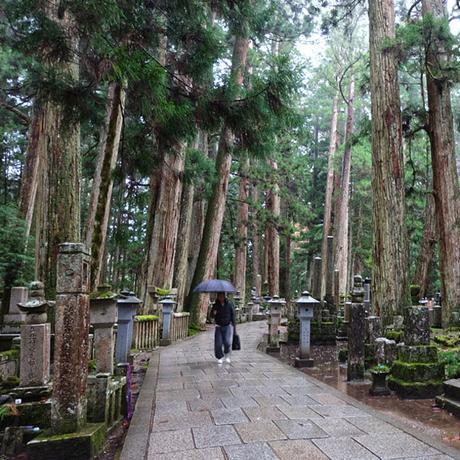 Ohayo gozaimasu, said he
Ohayo gozaimasu, said heWhen you find the sugitami no ido (Reflection Well), look down and check if you can see your face reflected in the water. But only if you're brave. Because if you don't see your reflection, it means you will die within three years! (I did see my reflection, so woe to all my friends and family: I will be here for at least three more years to bug you all!)
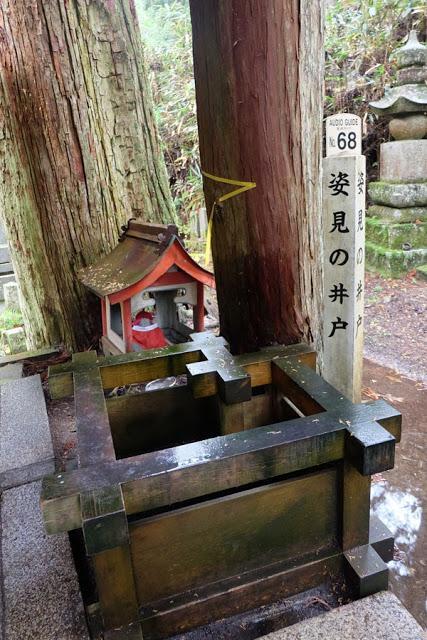 Sugatami no ido (Reflection Well)
Sugatami no ido (Reflection Well)The Zeni Jocchi Memorial is a small unassuming stone post. This is a memorial for a Buddhist nun with 1375 inscribed on it. Go down on your knees and put your ear on the stone and you will hear the cries in hell. So they say. I didn't want to hear those cries (true or not), so I just took a photo of the memorial.
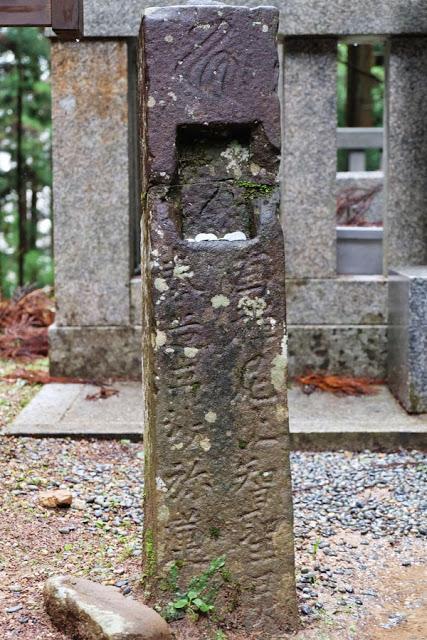 Zeni Jocchi Memorial
Zeni Jocchi Memorial There were many Jizo statues of different sizes around the cemetery. Jizo is the guardian of children and travelers. Many of the Jizo statues were adorned with bibs and hats in the hopes that Jizo will keep the deceased children warm in the afterlife.
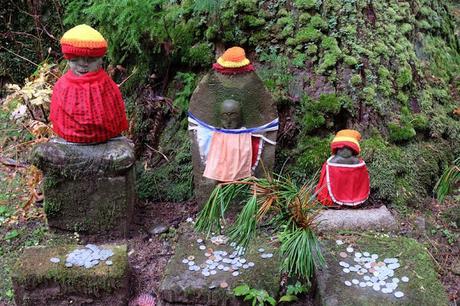 Jizo statues
Jizo statues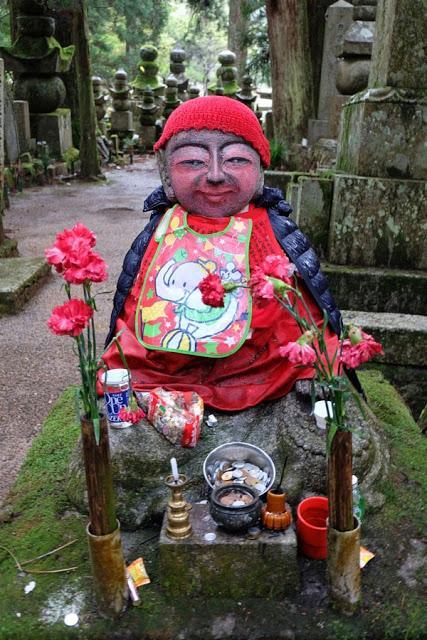 This Jizo statue is warm and toasty in its black down jacket. Guess that's why it's smiling.
This Jizo statue is warm and toasty in its black down jacket. Guess that's why it's smiling.Beyond the Gobyo no bashi (no photo zone!) is the Miroku-ishi (Miroku Stone) housed in a small cage with a hole where one can fit an arm in. Inside is a lower and upper platform with the Miroku Stone on the lower platform. It is believed that if one can lift the Miroku Stone from the lower to the upper platform, then he is one of the good people. (The more your sins are, the heavier the stone is.) I couldn't transfer it to the upper platform: I have a long confession to do!

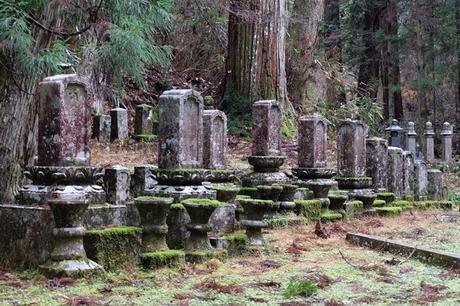
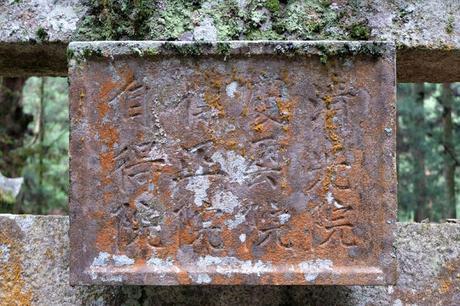
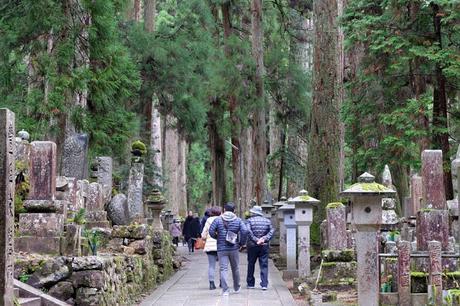
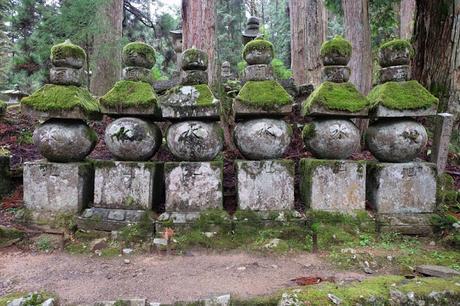
If you do decide to go to Koyasan, a visit to Okunoin with an audio guide is highly recommended (without an audio guide all the tombstones will eventually look and feel the same). If you can stay a night in Koyasan, take time to visit Okunoin at dawn and at night. Just leave
Japan
Know Before You Go
Single Entry Tourist Visa for Japan
Roam Around Japan with a Swagger
An Ignoramus in Japan: Vending Machines
An Ignoramus in Japan: Bathrooms and Toilets
An Ignoramus in Japan: Manhole Covers
I Spy With My Little Eye: Japan's Fashion Contradictions
I Spy With My Little Eye: On the Go in Japan
From Tokyo to Hiroshima (2015)
10D/9N | Tokyo, Toyama, Kyoto, Hyogo, Osaka, Hiroshima
Tokyo Accommodation: Shinjuku Airbnb
Tokyo: Memorable Tokyo Eats
Tokyo: Odaiba
Tokyo: Doing Touristy Things in Tokyo
Toyama: A Hamlet Called Ainokura
Kyoto Accommodation: K's House Hostel Kyoto
Kyoto, Japanecdote: Wisdom from the Road: On exits #2
Kyoto: By the Thousands (Kyoto Imperial Palace, Sanjusangendo, Fushimi Inari Taisha, Arashiyama Bamboo Grove)
Kyoto, Japanecdote: Turning Japanese
Kyoto: Braving the Crowds at these UNESCO World Heritage Sites in Kyoto (Kiyomizu-dera, Nijo Castle, Kinkakuji)
Hyogo, Japanecdote: If Only I Could Speak Nihongo
Hyogo: Day Trip to Himeji: Himeji Castle and Shoshazan Engyoji Temple
Hyogo, Japanecdote: Am I an Alien?
Hiroshima: Strolling and Snacking in Miyajima
Hiroshima: Remembering the Past in Hiroshima
Osaka, Japanecdote: How to Lose Friends
Osaka Accommodation: Osaka Airbnb
Osaka, Japanecdote: Where is Bentencho Station?
Osaka: Osaka Adlaw, Osaka Ako sa Osaka
Osaka, Japanecdote: Learn From Your Mistakes
Kansai Diaries (2016)
9D/9N | Wakayama, Nara, Kyoto, Osaka
UNESCO World Heritage Sites in the Kansai Region
Osaka: Day 0: Arrival
Osaka Accommodations: Hotel Raizan, Hotel Mikado
Wakayama: Day 1: Going to, Sleeping in, and Eating in Koyasan
Wakayama: Day 1½: West Side of Koya Town
Wakayama: Koyasan Sidewalk Shorts
Wakayama: Days 1¾–2: Okunoin, Three Times (you're here!)
Kyoto Accommodations: Guesthouse Wind Villa, Shiori Yado

